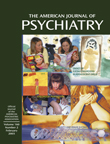This book on psychological theories of and research on memory is based on a conference held in 1999 in honor of Robert Crowder, a prominent Yale psychologist who died the following year. He comes back to life quite appealingly as his former students and colleagues intersperse reminiscences about him in the course of their widely varying presentations. Crowder demonstrated the trait of generativity described by Erik Erikson in that he encouraged and contributed to the work of many other psychologists doing memory studies. Crowder seemed unusually free of “confirmatory bias”—he welcomed research that disproved some of his own theories. Rather than hiding behind the anonymity granted peer reviewers of journal submissions, he routinely signed his reviews. Many of the contributors to this book seem to emulate Crowder’s integrity, openness to new ideas, and willingness to challenge orthodoxy.
How shall I summarize such a book for readers of this Journal who are psychiatric clinicians? Perhaps by mentioning a few of the points that seem especially relevant to clinical work. Tulving discusses “autonoesis,” or self-knowledge, and its origin in “episodic memory,” which allows us to remember our subjectively experienced past. Tulving is one of relatively few contributors to this book who try to correlate the psychological phenomena they are examining with neuroanatomical structures (he is also one of the few who call for interdisciplinary collaborative research). He cites neuroimaging investigations suggesting that autobiographical memory is associated with the right amygdala and right ventral prefrontal cortex (near the uncinate fascicle). Tulving describes the case of K.C., whose brain damage from a motorcycle accident left him with intact intellectual capacities, with the dramatic exception of autobiographical memory: “K.C.’s sole but substantial problem is that he cannot remember anything that has ever happened to him” (p. 22). Such a “fascinoma” supports the theory that episodic or autobiographical memory has distinct neuroanatomical pathways from semantic memory (i.e., general knowledge of the world). Although Tulving does not specifically mention alcoholic blackouts, he does point out that episodic memory, but not semantic memory, is impaired by ethanol (and by benzodiazepines).
Jacoby et al. describe scams perpetrated on elderly people with memory deficits and correlate these scams with the victims’ specific vulnerabilities. The accuracy of their memories is more vulnerable to interference, including that caused by misinformation. False “I told you” claims are more effective with victims who have come to doubt the reliability of their own memory, so a dishonest home repair person can give a low estimate and then insist on having quoted a much higher price after finishing the work.
Bjork reviews studies of “primacy” versus “recency” effects of memory. The former is the tendency to remember what was learned first; the latter is the contrasting tendency to remember best what was learned most recently. New learning favors the recency effect, whereas the passage of time with the disuse of both old and new memories leads to a “regression” to the primacy effect of what was first learned.
Banaji’s chapter summarizes his contributions to the study of “implicit attitudes,” such as unconscious prejudices, and is enlivened by a candid account of the controversies he has faced in doing and presenting his research. Banaji speculates that one source of opposition to his work is the “resistance to the idea of a lack of [conscious] control over the attitudes and beliefs that are dear to the hearts of most Americans (viz., a strong sense of racial equality and egalitarianism in general)” (p. 146). He even admits that “the developers of the technique were themselves taken aback by their own first performance because their data on this measure sat in direct contradiction to their presumed attitude” (p. 136). Yet we are in a better position to pursue our ideals if we know more about unconscious obstacles to doing so. Measures of implicit attitudes are based on the speed with which a research subject responds when the target object is paired with different evaluative attributes. Banaji cites research by Phelps et al. that showed no correlation between amygdala activity and measures of conscious attitudes about belief, but this research did show a correlation between amygdala activity in response to viewing unfamiliar black or white faces and measures of implicit attitudes of racial bias. Readers who are interested in this ongoing research can log onto www.yale.edu/implicit and participate in what Banaji calls this “(un)consciousness-raising device” (p. 136).
This is a book for readers who want a detailed overview of recent psychological research and theories of memory.

